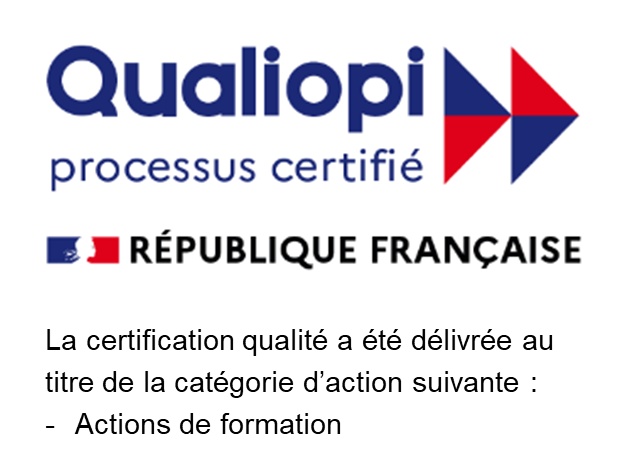ARE COST SAVINGS GETTING IN THE WAY OF YOUR DIVERSITY AND INCLUSION AGENDA?
Cecilia Franchi • July 18, 2019

A series of alternative approaches to International Mobility have emerged over the last few years. We have seen an increase in commuters, extended business travelers, and short-term assignments. Frequently, these “split family assignments” try to contribute to the deployment of talent around the globe while saving costs. We all agree that gender diversity is a must within organizations, with international assignments being an essential path to upper management positions. But are these cost saving initiatives helping or preventing gender diversity within our organizations? A series of studies support what our experience on the ground is telling us: female talent is more sensitive and reluctant than their male counterparts to accept split family assignments. Leaving their partner/spouse and children behind for a few months of commuting is not working well for female talent, whatever the age group. So, if your cost cutting initiatives are indirectly affecting your diversity and inclusion agenda, what does it mean for you as an international employer? Unaccompanied assignments for families have been on the rise for several years, either driven by the employee for practical reasons, or to cut costs for employers. Consequently, when cost-cutting is the main objective and these assignments progress long-term, it often becomes unsustainable for the family and may negatively impact employee retention
AIRINC’S 2019 Mobility Outlook Survey* reports that cost savings are now a permanent priority for most GM departments, whereas until now cost considerations have been somewhat cyclical or sector specific. This has led to the creation of many types of ‘light’ packages, with stripped down perks. On a global perspective, the partner of a female expat is more likely to prioritize their career than the partner of a male expat. This is in no way prejudiced but simply based on statistics, namely the number of non-working women which still outweighs men. With respect to traditional accompanied long term assignments, you could therefore deduce that female expats are more likely to expect or need spousal career assistance and other family-related assignment services whilst on assignment. In this sense, today’s lower cost packages, with trimmed down benefits, may be more discouraging to female talent than their male counterparts and this is working against the diversity goals of most organizations.
Jonathan Dunlea, Partner at PwC and Abbie Cooke, Global Mobility Consulting Senior Manager at PwC add: “With cost pressures persuading even more employers to look at different ways to approach mobility, many of these new approaches to mobility (extended business travel, commuter assignments, short term assignments etc.) can place additional pressure on the family unit, and disrupt “traditional” gender role expectations. It is important for employers to understand the ‘mobile readiness’ of their female employees, and that this changes over time due to stage of career, family and other personal commitments. Through alignment between talent management and global mobility, the right international opportunities can be identified at the right time for more female employees. Costs can still be managed in any scenario through building flexibility and choice into the mobility framework and policy options, therefore the resulting support and benefits package is more tailored to the individual’s needs and circumstances, without creating exceptions and additional entitlements. We believe that employers who are willing to take a flexible approach to their mobility policies and benefit entitlements will have a competitive advantage through mobilizing more of their female talent. Where employees are able to select assignment benefits which are most relevant to them (perhaps additional childcare support, or additional home leave flights, specific spousal support) and trade down benefits which might be less relevant, it will hand some degree of control back to the female expatriate, and maximize the chances of them taking the opportunity offered.”
Share this post

A series of trends and events are impacting the way APAC-based companies are doing business, as well as how international organizations engage with them. As workforce borders within this active region continue to blur, intercultural agility has become more important – and more nuanced – than ever before. Whether it’s a business that's building a diverse workforce within the APAC region or a multi-national company working across cultures to do business with them, employers and the employees that work for them must forget everything they think they know about intercultural communication. Growing workforce diversity means not just knowing about the culture a business is headquartered in, but also the many cultures making up their staff. Intercultural training has therefore become a crucial investment for any business hoping to thrive in this diverse landscape.

Most mobile employees accept international relocations with mixed feelings that include excitement and curiosity. However, they’re often surprised when their move comes with more feelings of disorientation than they expected. Culture shock – the feelings of confusion, disconnectedness, and anxiety that people experience while integrating into a new culture – can make it difficult for mobile employees to transition into their new assignments effectively. It can also make it difficult for their accompanying families to settle into their new home, adding further stress to your employees’ relocation experiences. It all negatively impacts employees – but it has costly negative impacts for the organization, too. Understanding the stages of culture shock can make dealing with it easier. Below, we take a look at each and offer suggestions your employees can use for navigating them. While supporting them on their journeys helps them to integrate into their new surroundings faster and with greater ease – it also benefits business productivity, organizational goals, and the company’s bottom line. Stages of Culture Shock & Suggestions for Dealing with Them

Between rising costs and limited budgets, it’s no surprise that many organizations turn to lump sum payments to control talent mobility spending. But is this approach effective – or can it actually end up costing companies more? In this blog post, we’ll discuss the unexpected costs associated with lump sum payment models, where they can go wrong, their impacts on the employee experience, and why managed moves benefit employees and organizations in the long run. Perception vs. Reality: Lump Sum Payment Outcomes When organizations offer lump sum payments to their mobile employees, they're often being driven by a few assumptions. They believe that their mobile employees: Possess sufficient financial skills to manage their relocation budget Are savvy enough to procure the right relocation services/providers at the right times Have enough host-country knowledge to navigate area-specific nuances independently Will decrease the need for administrative resources by self-managing their relocations

Patricia Glasel has a rich international background, having lived in several different countries growing up. Her journey began in Gabon, where she was born, and extended across various African nations due to her father's work. Patricia's extensive experience as an expatriate has given her a deep understanding of the joys and challenges of living abroad. She holds M.B.A. an a degree in organizational behavior and cross-cultural training from Northwestern University, which has equipped her to support others in their global mobility journeys. After having lived in 11 countries, Patricia currently resides in France and enjoys sharing her experiences to help others navigate their expatriation adventures. Patricia also serves as a Foreign Trade Advisor for the French Government, providing high-level insights and support for international trade initiatives.

In a competitive global market, organizations face a myriad of laws, regulations, and ethical standards. And because compliance requirements differ from one country to another, a workforce’s intercultural agility plays a significant part in a company’s ability to ‘be’ compliant in the countries they do business with. Intercultural misunderstandings can be costly, leading to safety issues, lost sales and missed business opportunities, but they can also result in hefty fines, sanctions, and even being barred from operating in key markets. Because the ability to navigate cultural differences is crucial to the success and sustainability of global organizations, cultural compliance should be a part of every organization’s overall compliance strategy.

NetExpat recently interviewed two key members of the Eramet Group Team about their efforts in providing intercultural training for their international workforce through their partnership with NetExpat. The initiative is designed to enhance cultural understanding and collaboration among expatriates and multicultural teams, leading to better teamwork and productivity. The interview offers insights on the implementation, impact on performance, family integration success, and much more.

Employee well-being benefits more than just employees. It also benefits employers and the customers they serve. What many organizations don’t realize is how much intercultural agility impacts employee well-being. Below, we’ll discuss the relationship between the two and why focusing on intercultural agility should always be a part of your global talent mobility strategy. Why Employee Well-being Matters Prioritizing employee well-being makes sense from a duty of care standpoint, but it also benefits businesses. Employees that are happy and well are typically more engaged at work. Employes that are culturally agile enjoy enhanced well-being, as they’re better able to collaborate with their teammates and customers. This results in higher levels of engagement at the individual level – and enhanced collaboration and innovation among teams. Additional outcomes include a stronger company culture, brand reputation, and employee retention rate. Customers also reap the benefits. When well-being is prioritized and employees are given the tools they need to succeed, they’re more likely to provide excellent customer service and care. Businesses benefit from higher customer satisfaction scores and brand loyalty. Conversely, the risks of not investing in employee well-being can be costly:

When organizations support mobile employees during an intercultural assignment, they benefit long after those same individuals repatriate. The trouble is, too many businesses don’t see repatriation as a component of the assignment, which can have negative outcomes for both them and the employees they’ve invested in: Without repatriation support, employees face a myriad of challenges, from reverse culture shock and career uncertainty to feeling diminished. Businesses end up paying the price, from employees being disengaged to losing talent altogether. Both have negative impacts on a company’s ROI.






